Understanding Reverse Flow Smokers And Offsets
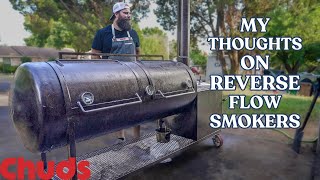
Reverse flow smokers and offsets are two popular types of smokers used for cooking barbecue. The main difference between them lies in the way the smoke and heat flow within the cooking chamber.
Reverse flow smokers have a steel plate inside the cooking chamber that extends from the firebox to the opposite end. The smoke and heat travel under this plate before circulating back over the food, ensuring even cooking and flavor distribution.
On the other hand, offset smokers have the firebox attached to the side of the cooking chamber. The smoke and heat travel from the firebox through a small opening into the cooking chamber, creating a more traditional cooking setup.
While both types of smokers can produce delicious barbecue, understanding their mechanics and functionality can help you make an informed decision when choosing the right setup for your needs.
Understanding The Concept Of Reverse Flow Smokers
Reverse flow smokers are designed to achieve more even cooking and flavor distribution. The concept behind these smokers is simple yet effective. They have a steel plate inside the cooking chamber that extends from the firebox to the opposite end. This plate serves as a baffle, forcing the smoke and heat to travel under it before circulating back over the food. As a result, the heat and smoke are evenly distributed throughout the cooking chamber, ensuring that every piece of meat receives the same amount of heat and smoke. This allows for consistent cooking and a more flavorful end product. Reverse flow smokers are favored for their ability to produce mouth-watering barbecue with minimal effort. The reverse flow design eliminates hot spots and provides a more controlled cooking environment. So, whether you’re a backyard enthusiast or a professional pitmaster, reverse flow smokers are a great option for achieving perfectly cooked barbecue every time.
Exploring The Mechanics Of Offset Smokers
Offset smokers work on the principle of indirect heat. They consist of a firebox attached to one side of the cooking chamber. The firebox is where the fuel is burned, generating heat and smoke. The heat and smoke then travel through a connecting pipe or opening into the larger cooking chamber, where the food is placed. This setup allows for a separation between the fire and the food, preventing direct contact and reducing the risk of burning. The offset design also allows for better temperature control, as the heat can be adjusted by controlling the airflow and fuel intake in the firebox. By maintaining a consistent temperature within the cooking chamber, offset smokers ensure slow and even cooking, resulting in tender and flavorful barbecue.
Reverse Flow Smokers: Features And Benefits
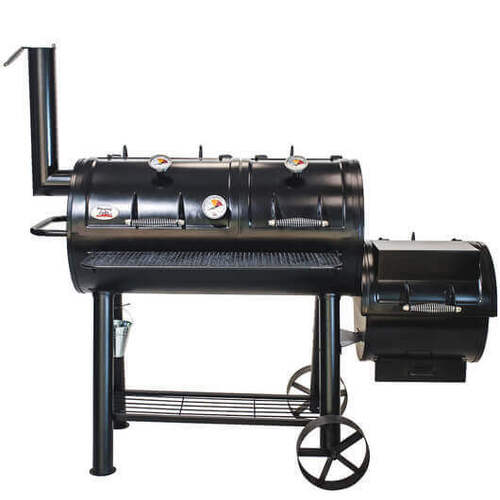
Reverse flow smokers offer several distinct features and benefits compared to traditional offset smokers. The key feature of a reverse flow smoker is the baffle plate that is positioned between the firebox and the cooking chamber. This plate forces the heat and smoke to travel below it before rising up through the cooking chamber, ensuring even heat distribution and smoke circulation. This design eliminates hot spots and creates a consistent temperature throughout the smoker, resulting in evenly cooked and tender meats. Additionally, reverse flow smokers provide better smoke flavor infusion, as the smoke is forced to pass over the food before exiting the smoker. This enhances the overall taste and aroma of the meats. Reverse flow smokers also offer better moisture retention, thanks to the indirect heat and improved airflow provided by the baffle plate. This helps to keep the meats juicy and prevents them from drying out during the smoking process. Overall, reverse flow smokers are a great option for those seeking precise temperature control, even cooking, enhanced smoke flavor, and juicy meats.
Advantages Of Using A Reverse Flow Smoker
Reverse flow smokers offer several distinct advantages over traditional offset smokers. The key advantage is their ability to provide even heat distribution and smoke circulation. This results in consistent cooking temperatures throughout the smoker and eliminates hot spots, ensuring that your meats are cooked evenly and tender. Additionally, the forced smoke flow in reverse flow smokers enhances the smoke flavor infusion, giving your meats a rich and delicious taste. These smokers also provide better moisture retention, keeping the meats juicy and preventing them from drying out during the smoking process. Overall, reverse flow smokers are a great choice for precise temperature control, even cooking, enhanced smoke flavor, and juicy meats.
Key Features To Look For In A Reverse Flow Smoker
When selecting a reverse flow smoker, there are a few key features to consider. First and foremost, look for a smoker with a solid construction and high-quality materials. Stainless steel or thick gauge steel smokers tend to be more durable and offer better heat retention. Additionally, choose a smoker with a large cooking chamber and sufficient cooking surface to accommodate the amount of food you typically smoke. A well-designed airflow system is also important, ensuring that smoke circulates evenly and consistently throughout the smoker. Lastly, look for a model with adjustable dampers or vents to allow for precise temperature control. By considering these key features, you can find a reverse flow smoker that meets your needs and delivers excellent cooking results.
Offset Smokers: Features And Functionality
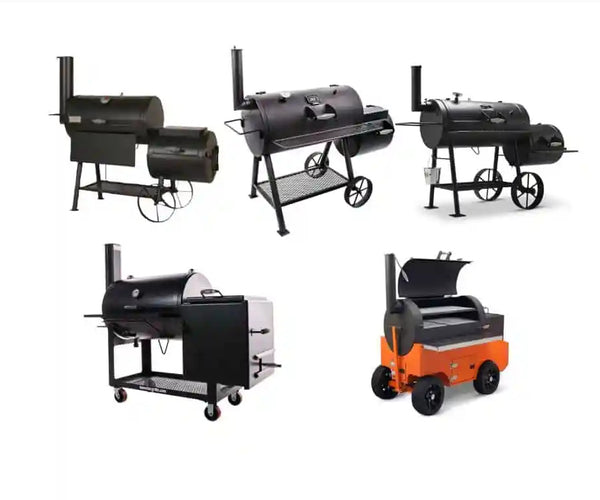
Offset smokers are known for their traditional design and functionality. These smokers consist of a firebox attached to the side of the cooking chamber, allowing for indirect heat and smoke to reach the food. One of the key features of offset smokers is their large cooking surface, which can accommodate a significant amount of food. Additionally, the offset design allows for better smoke control and heat distribution, resulting in even cooking throughout the chamber. Some offset smokers also come with additional features such as adjustable vents or dampers, allowing for precise temperature control. Overall, offset smokers offer a classic smoking experience with excellent heat retention and versatile cooking capabilities.
Understanding The Traditional Design Of Offset Smokers
Offset smokers have a traditional design that has been used for decades. These smokers consist of two main chambers – a firebox and a cooking chamber. The firebox is attached to the side of the cooking chamber, allowing for indirect heat and smoke to reach the food. This design ensures that the food is cooked slowly and evenly, resulting in tender and flavorful barbecue. The offset design also allows for better smoke control, as the smoke can circulate around the food before exiting the chamber. This traditional design is preferred by many barbecue enthusiasts for its classic and reliable functionality.
Functionality And Benefits Of Using An Offset Smoker
Using an offset smoker offers numerous advantages for barbecue enthusiasts. The functionality of an offset smoker lies in its traditional design, with the firebox attached to the side of the cooking chamber. This setup allows for indirect heat and smoke to circulate around the food, resulting in slow and even cooking. The offset design also provides better smoke control, allowing for the perfect balance of smoky flavor without overwhelming the food. The key benefits of using an offset smoker include achieving tender and flavorful barbecue, the ability to cook large quantities of food, and the nostalgia of using a classic and reliable smoking method.
Mastering Smoke Control With Reverse Flow And Offset Smokers
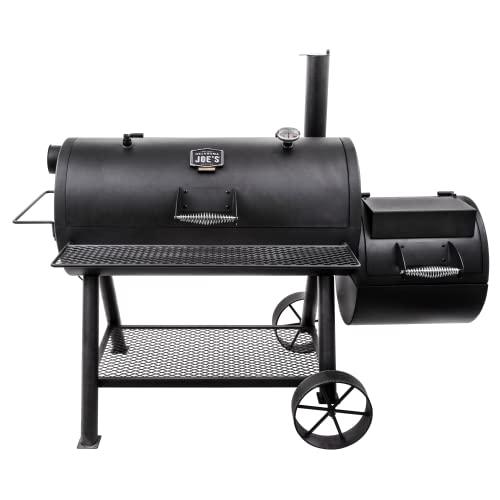
Mastering smoke control is crucial when using both reverse flow and offset smokers. In reverse flow smokers, it is important to regulate the smoke by adjusting the baffles and dampers to achieve the desired level of smoky flavor. By understanding the airflow dynamics, cooks can manipulate the smoke to evenly circulate around the food, resulting in flavorful and tender barbecue. Similarly, in offset smokers, controlling the smoke involves managing the fire and airflow through the firebox and chimney. This ensures that the smoke is adequately distributed throughout the cooking chamber, enhancing the taste and aroma of the meat. By honing their smoke control skills, barbecue enthusiasts can achieve incredible results with both reverse flow and offset smokers.
Tips For Controlling Smoke In Reverse Flow Smokers
To effectively control the smoke in reverse flow smokers, there are a few key tips to keep in mind. First, adjust the baffles and dampers to regulate the amount of smoke. By manipulating these components, you can create a balanced airflow that evenly distributes smoke throughout the cooking chamber. Additionally, it’s important to monitor the firebox temperature and make adjustments as needed to maintain a consistent heat level. Finally, consider using wood chunks or chips to add flavor and aroma to the smoke. By mastering these tips, you can achieve the perfect smoky flavor in your reverse flow smoker.
Techniques For Managing Smoke Levels In Offset Smokers
To effectively manage smoke levels in offset smokers, there are several techniques to keep in mind. First, adjusting the firebox airflow can control the amount of smoke produced. Opening the damper slightly will increase airflow and reduce smoke, while closing it will do the opposite. Additionally, using a combination of charcoal and wood chunks can help in managing smoke levels. The charcoal provides a consistent heat source, while the wood chunks add the desired smoky flavor. Furthermore, placing a water pan in the cooking chamber can help regulate the temperature and reduce smoke. By employing these techniques, you can achieve the perfect balance of smoke in your offset smoker.
Maintenance And Care For Reverse Flow And Offset Smokers
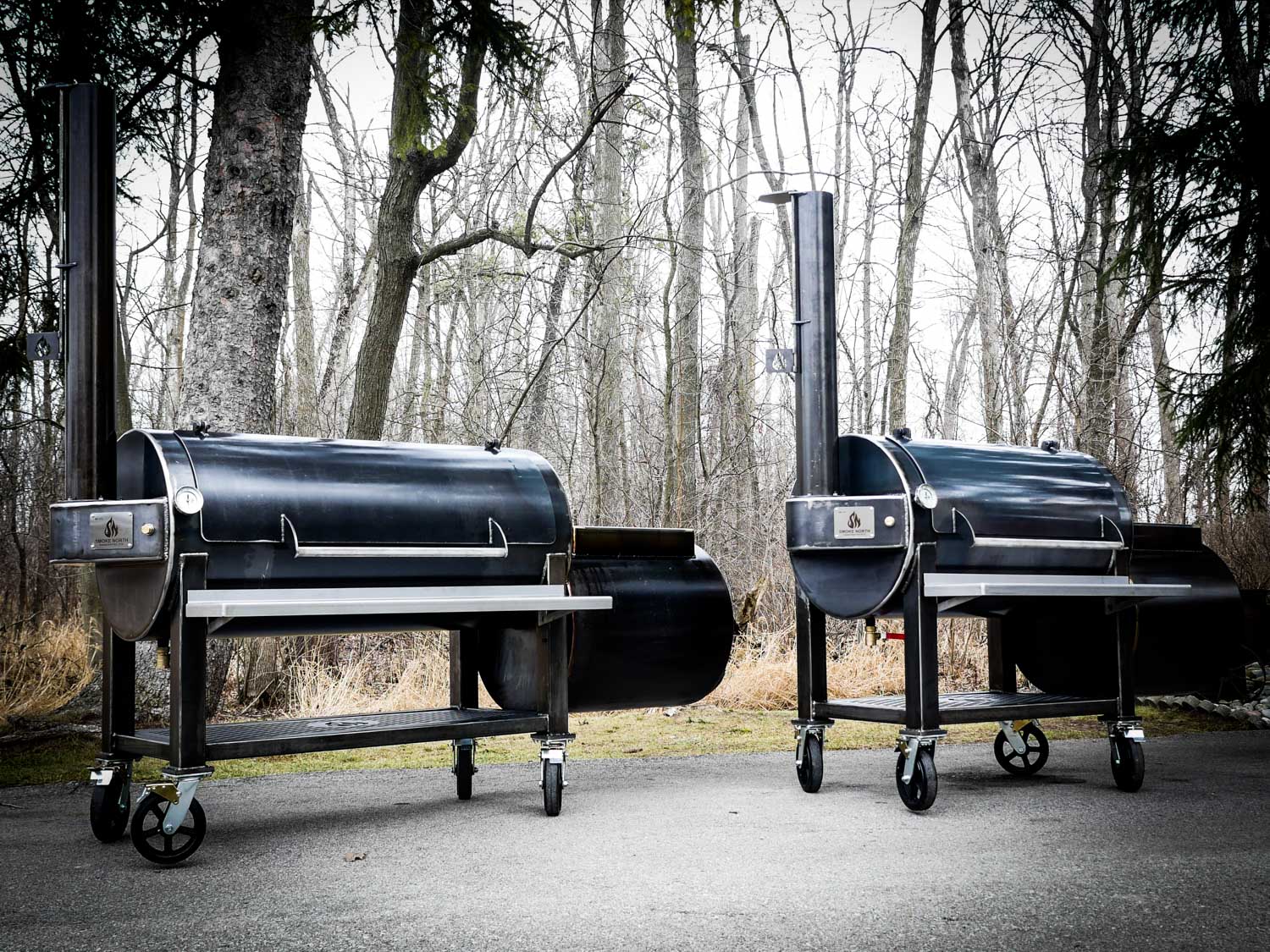
To ensure the longevity and optimal performance of your reverse flow or offset smoker, regular maintenance and care are essential. Here are some key steps to keep in mind:
- Cleaning and upkeep of reverse flow smoker components: After each use, clean the cooking grates, grease trays, and other removable parts with warm soapy water. Remove any ash or debris from the firebox and clean the chimney stack. Regularly inspect the seals and gaskets for any signs of wear or damage and replace as needed.
- Maintaining the integrity of an offset smoker: Inspect the firebox for any rust or deteriorating metal and apply a high-temperature paint or sealant to prevent further damage. Keep the cooking chamber and firebox free from excess grease and ash buildup. Lubricate the hinges and moving parts regularly to ensure smooth operation.
By following these maintenance practices, you can extend the lifespan of your reverse flow or offset smoker and continue to enjoy delicious barbecue for years to come.
Cleaning And Upkeep Of Reverse Flow Smoker Components
After each use, it is crucial to clean the various components of your reverse flow smoker to maintain its functionality and extend its lifespan. Start by removing the cooking grates, grease trays, and other removable parts and wash them with warm soapy water. Take care to remove any ash or debris from the firebox and clean the chimney stack thoroughly. It is also essential to regularly inspect the seals and gaskets for any signs of wear or damage and replace them if necessary. By keeping your reverse flow smoker clean and well-maintained, you ensure optimal performance and delicious barbecue every time you use it.
Maintaining The Integrity Of An Offset Smoker For Optimal Performance
Proper maintenance is key to ensuring the optimal performance of an offset smoker. Regular cleaning of the cooking grates, firebox, and chimney stack is essential to remove any residue or buildup. This not only helps to prevent flavor contamination but also ensures efficient heat distribution. It is important to check for any signs of rust or damage and address them promptly. Additionally, maintaining a consistent temperature through the use of a thermometer and regulating airflow with dampers can greatly enhance the performance of an offset smoker. Regular maintenance and upkeep will extend the lifespan of your offset smoker and ensure delicious and consistent results every time you use it.
Conclusion
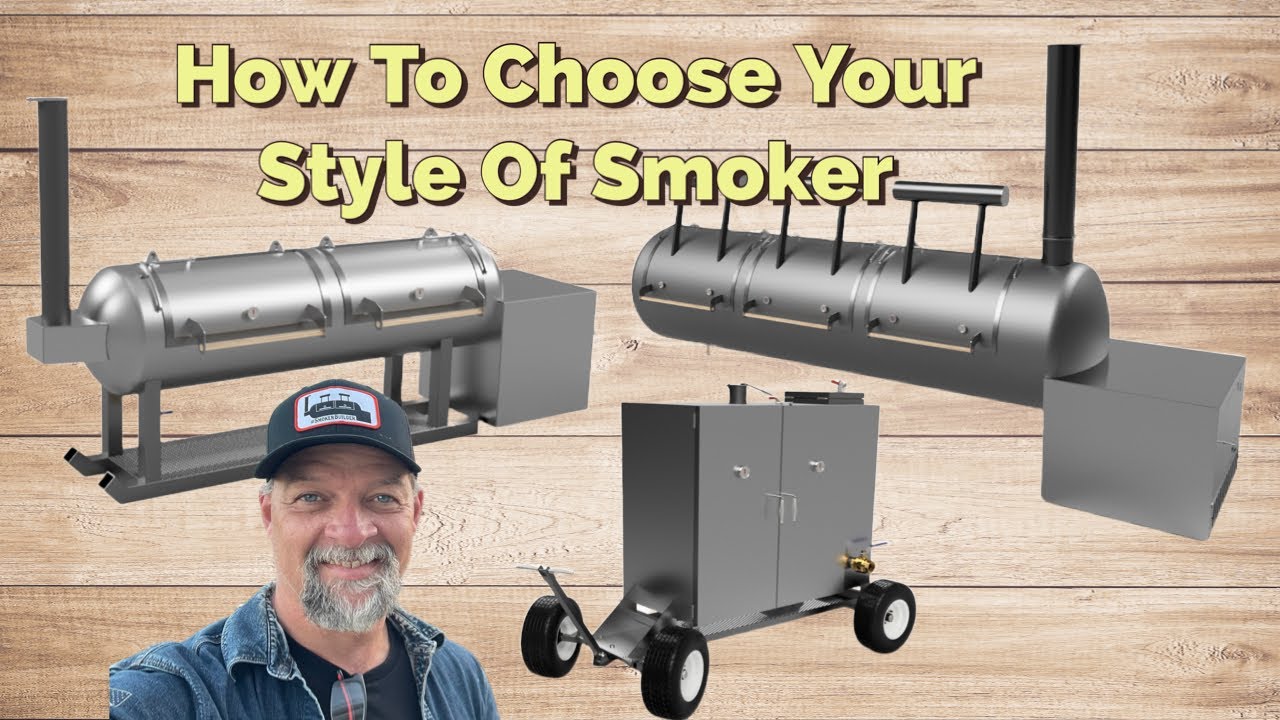
In conclusion, both reverse flow smokers and offset smokers have their unique features and benefits. Reverse flow smokers offer even heat distribution and reduced hot spots, while offset smokers provide traditional and authentic barbecue flavor. The choice between the two ultimately depends on personal preferences and cooking needs. It is important to consider factors such as temperature control, smoke management, and maintenance when selecting the right smoker setup. By understanding the mechanics and functionality of reverse flow and offset smokers, you can master the art of smoking and create delicious, mouth-watering barbecue dishes every time.
Pros And Cons Of Reverse Flow Smokers Vs. Offsets
Reverse flow smokers have several advantages. They offer even heat distribution, leading to reduced hot spots and more consistent cooking results. They also provide better smoke circulation, resulting in enhanced flavor infusion. However, reverse flow smokers can be larger and more expensive. On the other hand, offset smokers offer a traditional and authentic barbecue flavor that many barbecue enthusiasts prefer. They are also typically more affordable and easier to find. However, offset smokers may require more attention and skill to maintain consistent temperature and smoke control. Ultimately, the choice between the two comes down to personal preference and cooking needs.
Choosing The Right Smoker Setup For Your Needs
Choosing the right smoker setup for your needs ultimately comes down to what you value most in your barbecue experience. If you prioritize consistent and even heat distribution, along with enhanced smoke circulation for optimal flavor infusion, a reverse flow smoker may be the best choice for you. On the other hand, if you prefer a traditional and authentic barbecue flavor, and are comfortable with the occasional hot spots and the need for closer temperature and smoke control, then an offset smoker may be the better option. Consider your cooking preferences, skill level, and budget when making your decision. Regardless of your choice, both reverse flow smokers and offsets can deliver delicious barbecue results.
FAQ About Reverse Flow Smoker Vs Offset: Mastering The Smoker Setup
Q: What is a Reverse Flow Smoker?
A: A Reverse Flow Smoker is a type of smoker where the smoke and heat flow in a reverse direction compared to traditional offset smokers.
Q: What is an Offset Smoker?
A: An Offset Smoker is a classic smoker design where the firebox is located off to the side of the cooking chamber, allowing indirect heat and smoke to circulate inside.
Q: What are the main differences between a Reverse Flow Smoker and an Offset Smoker?
A: The main difference lies in how the smoke and heat flow within the smoker. In a Reverse Flow Smoker, the smoke circulates under a baffle before rising through the cooking chamber, while in an Offset Smoker, the smoke enters directly into the cooking chamber from the firebox.
Q: Which smoker is better for controlling temperature and smoke distribution?
A: Reverse Flow Smokers are often preferred for their even heat distribution and better temperature control, as the smoke has to pass through the entire cooking chamber before venting out.
Q: Which smoker is easier to use for beginners?
A: Offset Smokers are usually more straightforward for beginners due to their simpler design and operation. However, with practice, mastering a Reverse Flow Smoker can yield excellent results.
Q: How important is the setup and maintenance of these smokers?
A: Proper setup and regular maintenance are crucial for both types of smokers to ensure optimal performance and longevity. Paying attention to factors like fuel type, air ventilation, and cleaning can significantly impact the quality of your smoked meats.
Q: Are there any tips for mastering the setup of a Reverse Flow Smoker vs an Offset Smoker?
A: Keeping a consistent temperature, using quality wood for smoke flavor, and regularly checking for leaks or obstructions in the smoker are key tips for mastering the setup of either type of smoker.

The Stone’s Sports Grill and Bar was Established on December 1, 2021. The Stone is a Sequel to another restaurant called Cornerstone’s First Edition in Tucumcari, NM. This particular venue is located on the Southeast side of Colorado Springs. The Stone is Wide Open. We have a large dance floor, multi-level stage, pool room, (5) dart boards, and a bar with a large selection of wine spirits and brews.